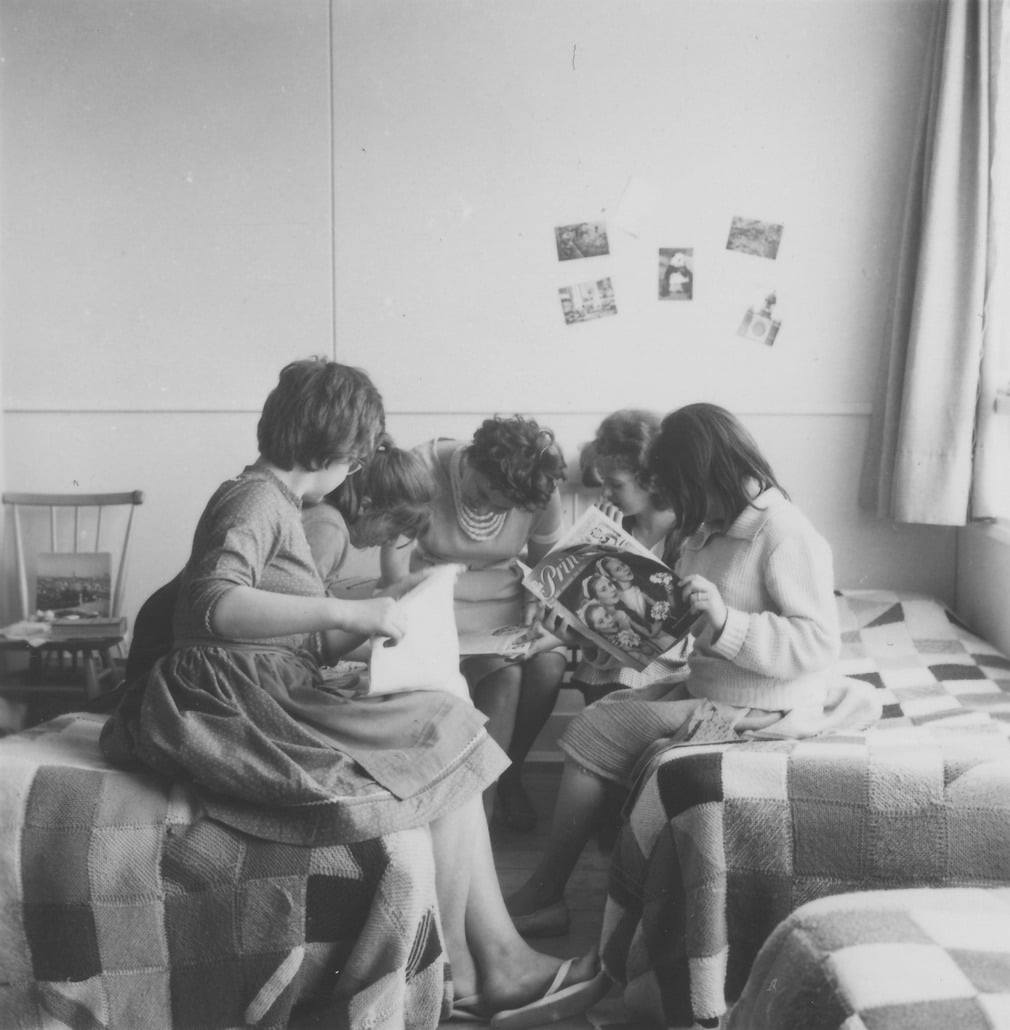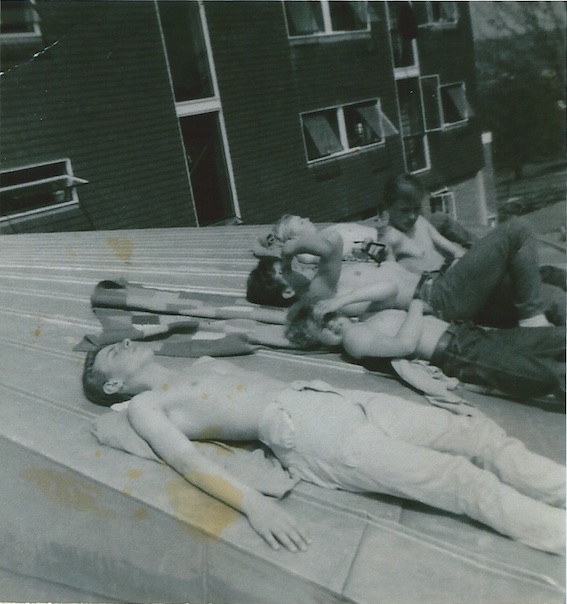We love to hear from our readers and earlier this year got a call from Len Clarke who told us about his memories of the Pestalozzi Children’s Village in East Sussex, England, in the 1960s. Len had seen an image on Flashback of a group of Tibetan children playing ball at the Village shortly after their arrival in the UK on March 7 1963. The children had fled Chinese rule in 1956 and been nominated by the Dalia Lama, Tibet’s leader, to come to the UK in the hope they would be well cared for and educated enough to one day return their country as doctors, lawyers and other professionals. More children were selected from refugees who had fled Tibet following the 1959 Tibetan Uprising and were based in Dharamsala, northern India.
“These are people who we grew up with in the early 1960s,” says Len.
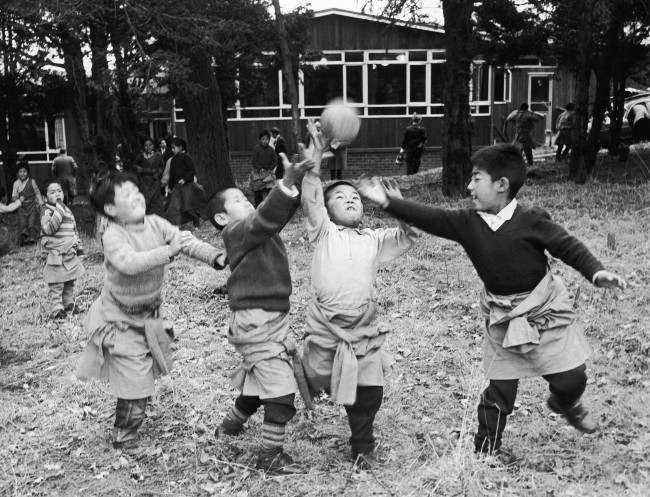
Len and William Eiduks are working on a project to recover the “all but lost” story of the early Pestalozzi children. “The aim of this project is to gather, preserve and relate the story of the children of the Pestalozzi Children’s Village who arrived between 1959 and 1965.
“Together we’ve amassed some 1,100 photos (pro images and personal snaps) and continue to search for more.,” says Len. “Currently, we’re in the process of writing a book (which we are self-publishing) about our childhood at Pestalozzi. While it was by no means perfect, it was brilliant and had a huge impact on us – which continues to resonate in our lives to this day. We’re two old guys who love the amazing experiences we had in care at Pestalozzi in the early 60s and the lifelong friendships we made.”
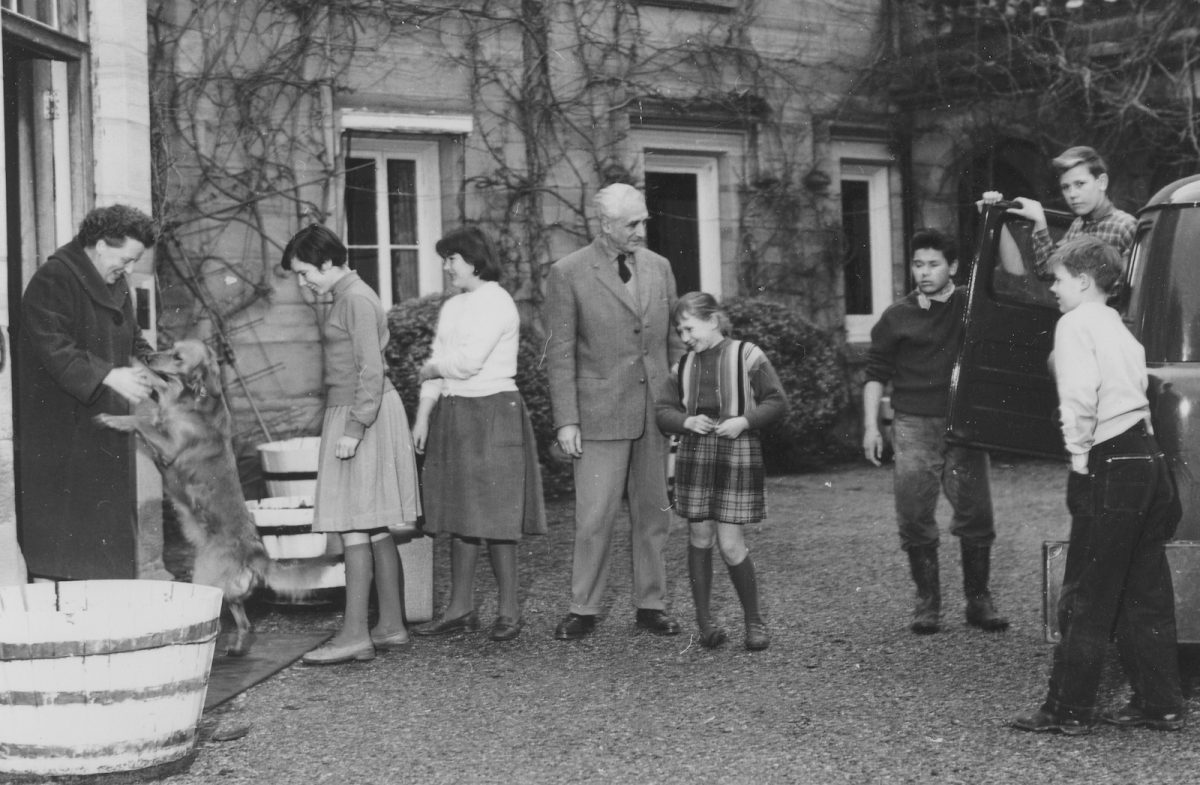
New arrivals at the Village are greeted by the co-founders and some of the children at the Manor House entrance. From left: Mary Buchanan (co-founder) along with Tessa, one of her two dogs, Ursula, Cristina, Dr Alexander (co-founder), Czeska, Arnold, Janis (standing in car) and Richard.
The History
The Pestalozzi Children’s Village is named after the Swiss education pioneer Johann Pestalozzi. Established in 1945, the aim was to give children hurt by the war in Europe a safe place to live and thrive.
The British Pestalozzi Children’s Village Association was founded in 1947 by Dr Henry Alexander, a German, Jewish refugee, who moved to UK before the Second World War, and Mrs Mary Buchanan, a British sociologist. They’d been inspired by the successful efforts of Dr Walter Robert Corti, a Swiss philosopher, and a group of his associates who had created a Pestalozzi Children’s Village in Trogen in Appenzell in the north of Switzerland. This community was initially to accommodate European children orphaned as a result of WW2. Children were housed in small national groups where they were educated in their own languages and cultures.
Ten Years Later
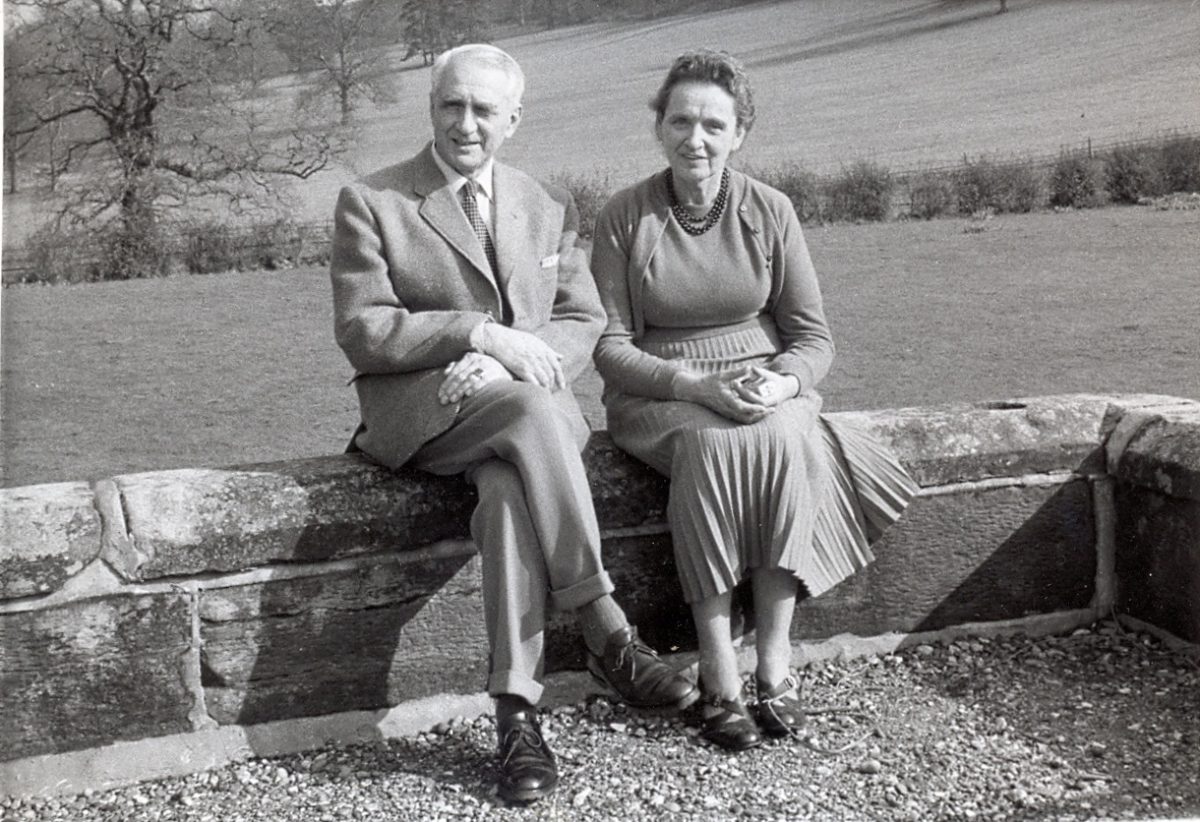
Dr Henry Alexander, one of the two co-founders of the Pestalozzi Children’s Village in Sedlescombe, in a relaxing pose with his wife, Hilde, sitting in the garden behind the Manor House.
In 1957, the British group purchased a 170 acre property in Sedlescombe, just north of Hastings, East Sussex. Dr. Alexander and Mrs Buchanan had gathered an impressive group of educators, academics, philanthropists, clergy, business people, nobility and other ‘movers & shakers’ to come onto the Trust Council. Simultaneously, they promoted their cause publicly to the British people.
The Children
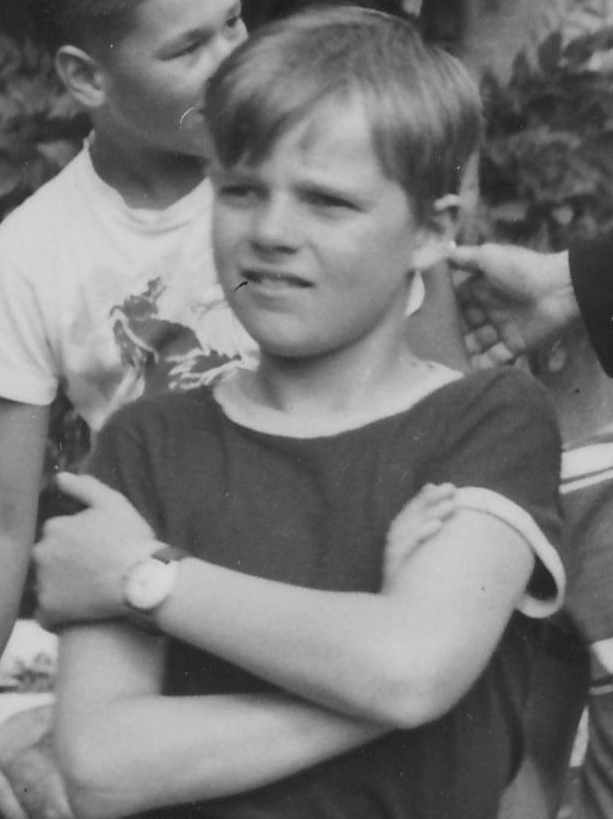
Richard Heard at Pestalozzi in late August 1959 (not long after his arrival).
After 12 years of determined preparation, the plan came to fruition. On 15 August 1959 a young English boy, Richard Heard (then 11), arrived at the Oaklands estate in Sedlescombe, East Sussex. He was the very first child to join the newly-opened British Pestalozzi Children’s Village.
“From Aldershot in Hampshire, Richard’s experience on arrival can only be imagined, says Len, “there was not a single other child in the place on that first day! A house-mother (Maureen) and a house-father (‘Uncle Mac’) were his principle companions. For 24 hours, he had the entire 170 acres virtually to himself (don’t forget, the UK was a lot less regulated in those days – and the Pestalozzi community’s ideals then included allowing children a greater degree of independence).”
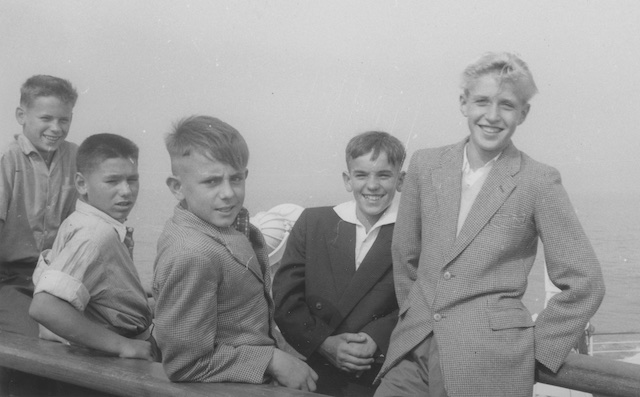
The first European children, crossing the English Channel, on their way to the Pestalozzi Children’s Village. From left: Jurek, Arnold, Roman, Niko and Stachek.
In August 1959, more children arrived at the Village. These were predominantly European children from refugee families who had ended up in Displaced Persons’ camps in Germany at the end of the Second World War. Additionally, some British children from deprived backgrounds were also selected.
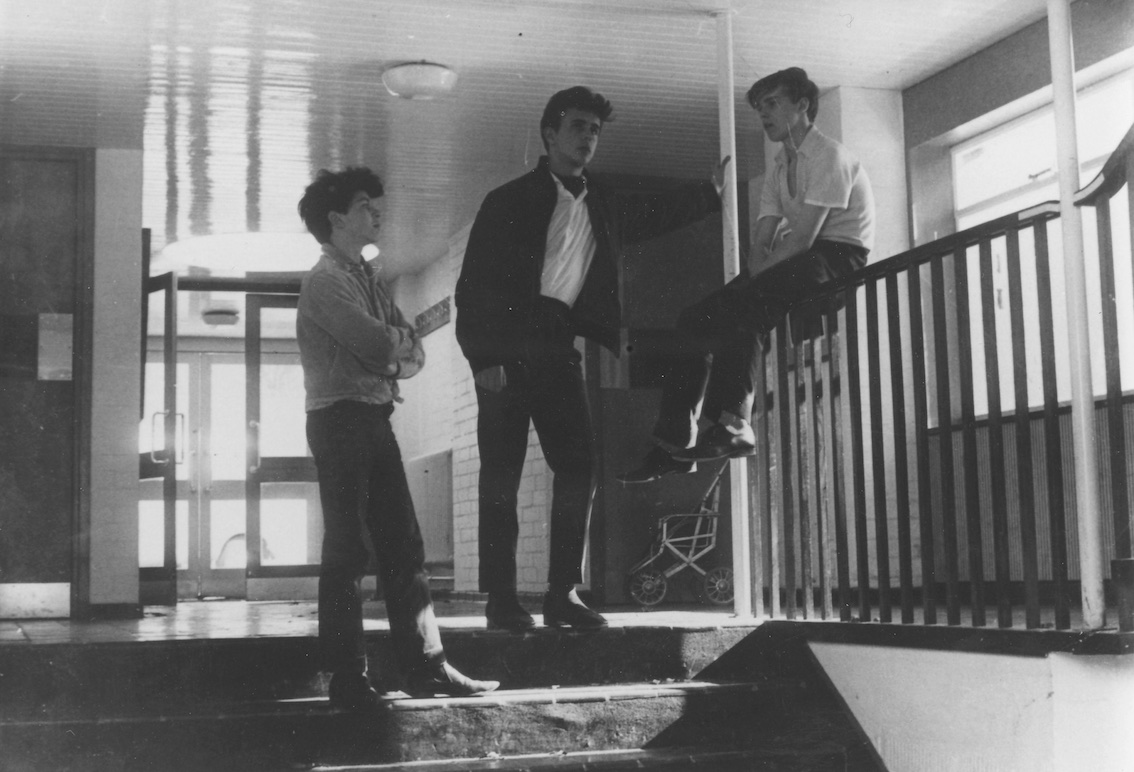

The selection process was based on having a lack of adequate family care. A child who lived in poverty but who had a strong and loving family around it would not be eligible. There was also an expectation that the child would have a promising degree of educational ability.
In the Sussex countryside the children lived on the estate and attended local schools, once they had mastered sufficient English to move into the community.
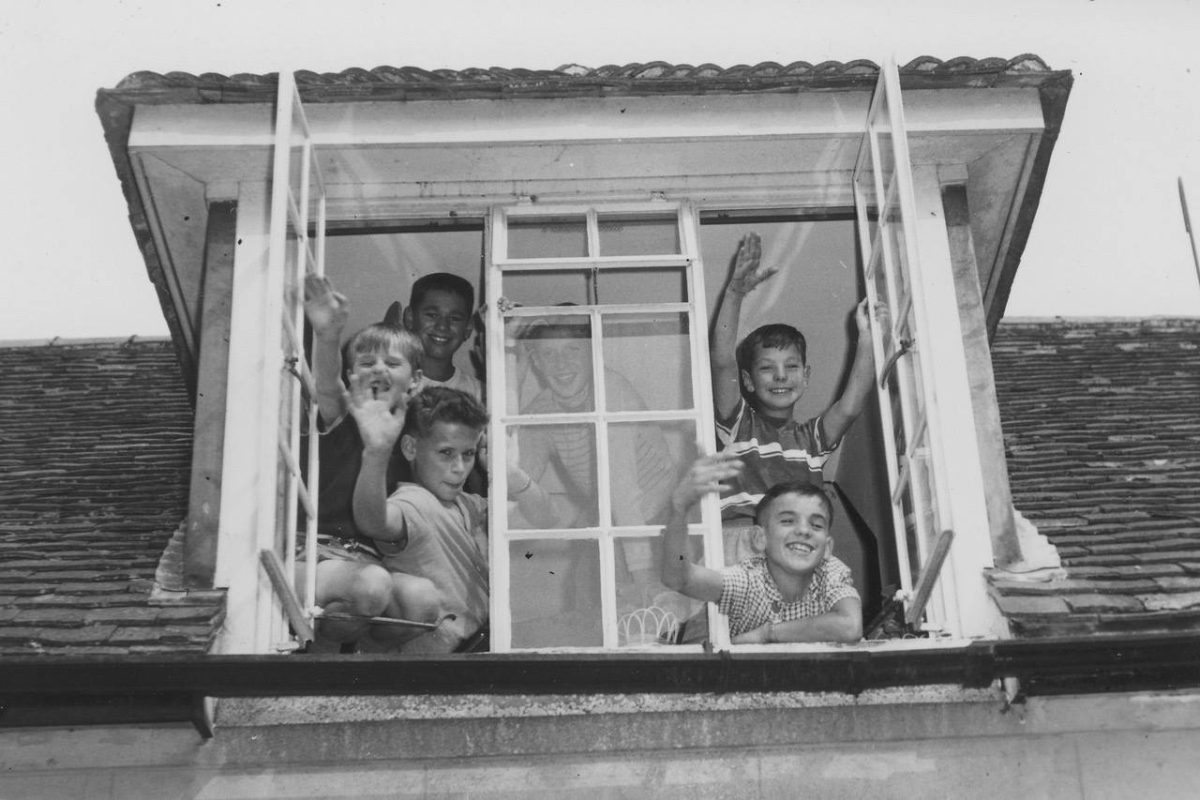
For anyone who remembers: left (from top): Arnold, Richard (the very first child to arrive at Pestalozzi) and Jurek. Right (from top): Leonard and Niko. Sadly, only Jurek and Leonard survive to this day.

The Microbus is presented to Dr Alexander outside the Oaklands Manor House by Volkswagen senior company executives.
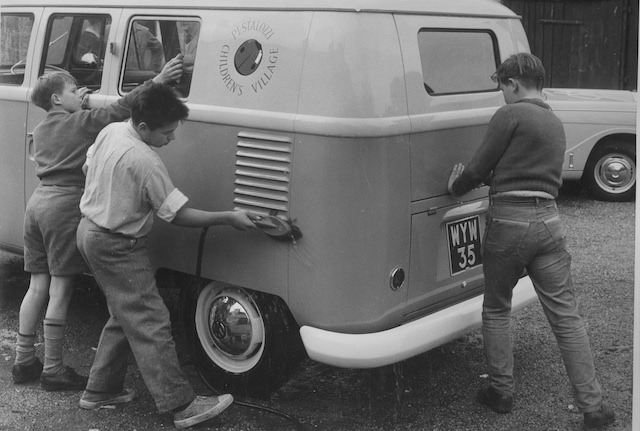
One of our chores was to regularly clean the Microbus. Here are (from left) Richard, Arnold and Janis. Note – the Pestalozzi decal has been added to the rear panel.
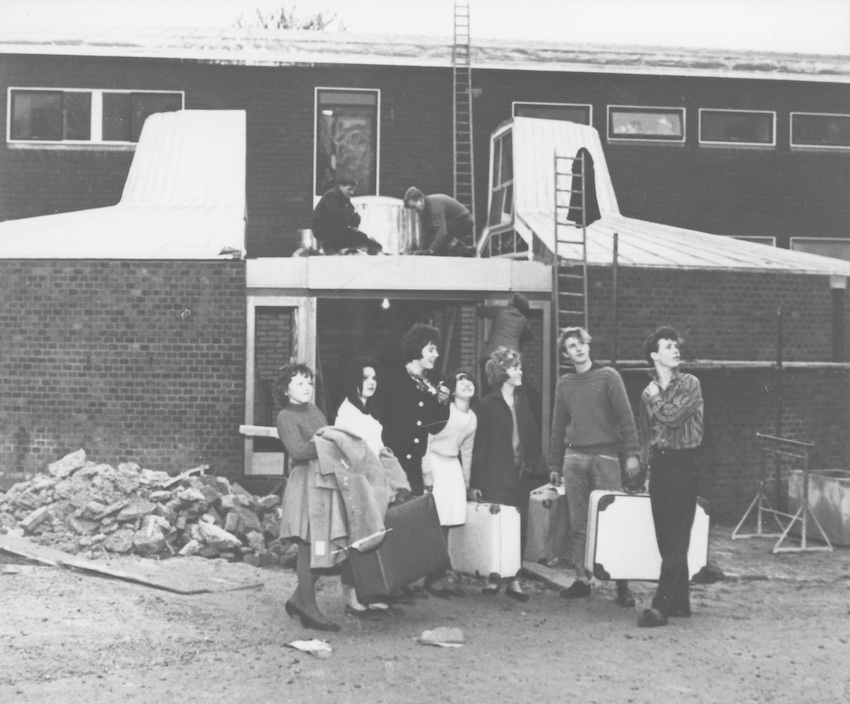
The first children move into International House.
The first Warden recollects that the children were to be cared for in an environment which was their home as opposed to being an institutional home. Thus, no matter what difficulty a child presented, they would not be removed – in much the same way as they might live in a conventional family situation.
Success
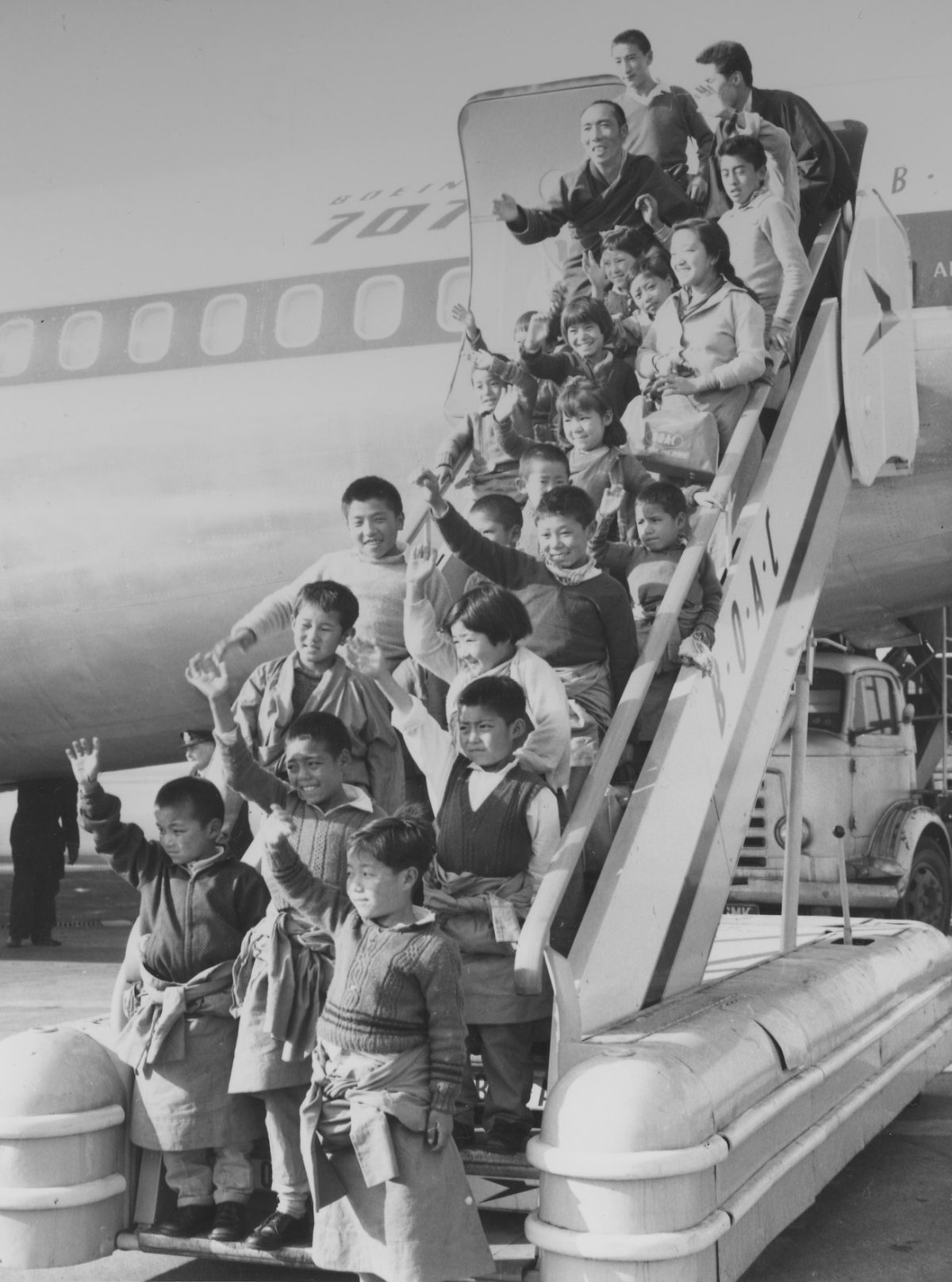
The arrival of the first Tibetan children from India. The man near the top of the stairs, waving with his right hand, is the children’s lama (their priest and teacher).
The community immediately achieved nation-wide attention and popularity. Hundreds of schools, social groups and other business and community organisations flocked to support ‘the Village’ by fundraising and selling ladybird stick pins for one shilling apiece. The Village was feted by television and radio, including celebrities who lent their names in support of the charity.
Significant developments occurred during the early 1960s. In 1963, a group of 22 Tibetan children, along with their Tibetan house parents and llama, were brought to Sedlescombe from northern India. These children were integrated into local life, along with the European children.

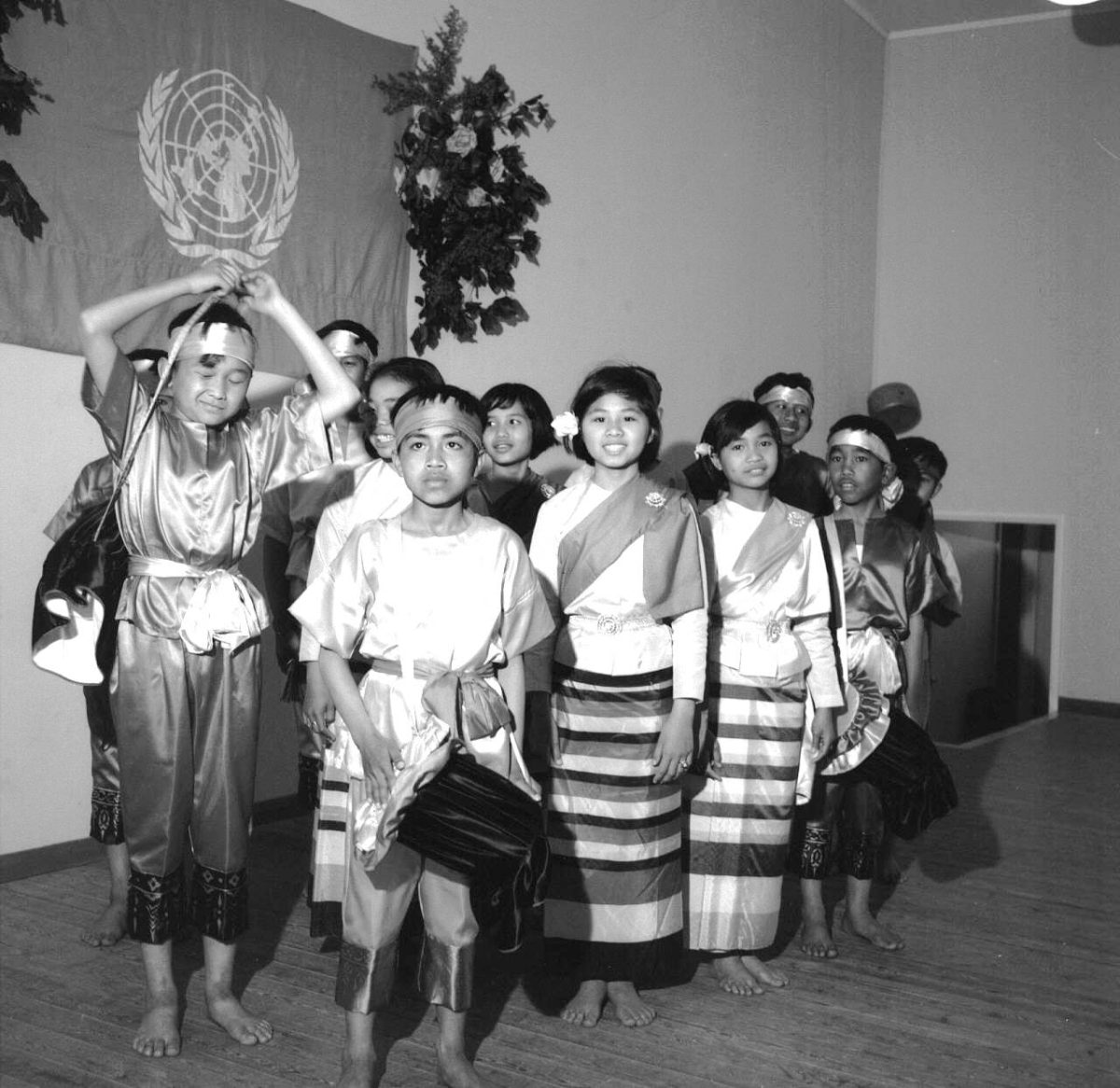
By 1965, when the last of the European children had arrived, it is believed that the Village Trust had decided to focus on supporting children from Third World nations. The original European children began to leave as they completed their secondary education. They were either returned to their previous homes, reluctantly in some cases, or stayed in the UK to find themselves a future life. A small number remained under the care of the Village whilst they pursued a further education. Given the way the Village had started, with its sense of being a home, for many of the former resident children there was a strong sense of loss. They had, in effect, lost their home and surrogate family.
By 1967/68, the last of the European children had departed the Sedlescombe community and the early story of the Pestalozzi Children’s Village had come to an end.
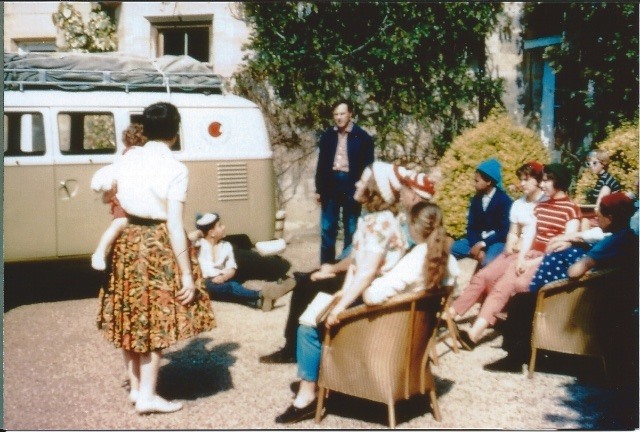
A colour pic to show off the Microbus two-tone colour scheme (not sure just how faithful the colour reproduction is in this pic). Note – the two adults in this photo are the Warden, Eric Bourne, and his wife, Margaret (back to camera and holding their daughter, Susan).
This photo was taken later – possibly during 1960.
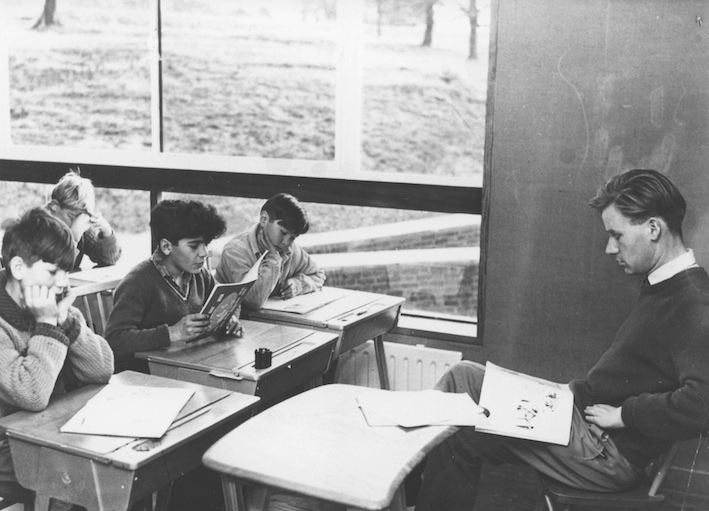
The South House common room. Located on the first floor, looking out towards the area where the time capsule was buried. Here, housefather John Morton takes a group of the European children for education classes. Once they had mastered sufficient English, they would transfer to Claverham School in Battle.

Children and staff relaxing on the weekend outside on the patio behind International House. The lovely housemother, Janet (we are still in touch with her!) can be seen on the right in a hat. The boy next to her (reading the paper) is Nigel (English). This is the only photo we have of him and, sadly, have had no contact since 1974.
Afterwards
Through subsequent decades, many of the European former Pestalozzi children have remained in contact with each other, along with a small number of the Tibetans – but with only tenuous links being maintained with the later Pestalozzi International Children’s Village. Then, in 2009, two former Village children, living once again in Germany (now with children and grandchildren), decided to initiate a 50th anniversary reunion. This inspired others and, with the support of the current Village Trust, they were able to involve 30 of the original 61 European children in a gathering in “the Village” in September 2009 (nine of the original group were deceased by this time and another 17 were still unaccounted for). Former children returned from Germany, Poland, USA and Canada as well as from across the UK. This was an emotional and memorable event and it reminded everyone of the experiences that kept them connected. Through good and bad, it was generally agreed, this had been a profound episode in their lives.

It’s weird how such small things can trigger a reaction. A lovely lady (the one who took the latest photos we’re displaying), whose mother and grandmother used to support Pestalozzi in the early days, recently rediscovered her mother’s pencil tin. It contained an ancient Pestalozzi pencil – at least fifty years old. I had totally forgotten about these! They were sold as fundraisers but I can’t remember how much they cost. They were triangular-shaped, with the sides slightly rounded.
The appeal
Were you there all those years ago? “At this stage we are touch with only a small number of the Tibetan former children,” says Len. “Our hope is to rediscover or account for them and, similarly, regain the lost connection.”
You can get in touch with Len and Will at their site, Early Pestalozzi Trust – and do your bit to add to the archives of what is wonderful story.
Would you like to support Flashbak?
Please consider making a donation to our site. We don't want to rely on ads to bring you the best of visual culture. You can also support us by signing up to our Mailing List. And you can also follow us on Facebook, Instagram and Twitter. For great art and culture delivered to your door, visit our shop.

